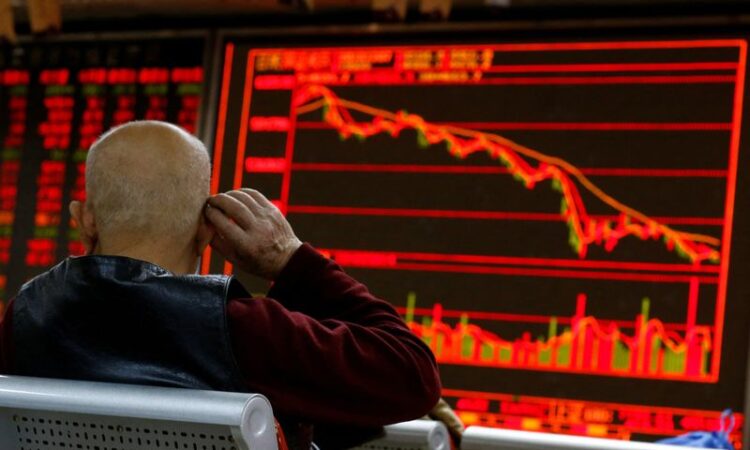
By Tom Westbrook
SINGAPORE (Reuters) – Oil was slightly higher on Monday as an abortive weekend mutiny by Russian mercenaries raised questions about crude supply, while stocks lacked direction as investors waited for more clarity around the situation.
Brent crude futures were last up 0.4% at $74.14 having earlier drifted as high as $74.80. MSCI’s index of Asia-Pacific shares outside Japan dipped to a three-week low before floating around either side of flat.
Japan’s Nikkei bounced around, too, and was last trading flat. The safe-haven yen rose marginally, helped by hints at possible government intervention to support it and by a summary showing a central bank board member pushed in June for a debate on its yield curve control policy.
S&P 500 and European futures rose 0.3%.
Russian mercenaries made a short-lived rebellion on Saturday, seizing the southern city of Rostov and advancing on Moscow demanding the removal of Russian military commanders in charge of the war in Ukraine.
The private Wagner army then withdrew after striking a deal guaranteeing their safety and the exile of their leader, Yevgeny Prigozhin, to Belarus. The consequences for the Ukraine war were not clear, though the challenge to Russian President Vladimir Putin’s authority was the starkest in decades of his leadership.
“Geopolitical risk amid internal instability in Russia has increased,” said Rystad Energy analysts Jorge Leon. “As such, we are likely to see a marginal uptick in oil prices in the coming days, if the situation does not deteriorate.”
Analysts at RBC Capital Markets said one concern was the possibility of martial law in Russia and its effect on the workforce at ports and production facilities.
U.S. Secretary of State Antony Blinken said the turmoil in Russia could take months to play out, while Italy’s foreign minister said it had shattered the “myth” of Russian unity.
CHINA FOCUS
Elsewhere markets were already on edge about a darkening growth outlook, as China’s post-pandemic recovery stalls and global interest rates remain high, and traders were reluctant to take any new positions on the basis of Russian events.
The risk-sensitive Australian dollar was steady at $0.6679. The euro nursed last week’s modest drop at $1.0906 and sterling held at $1.2728.
“I don’t think the market can get its head around working out if there are implications,” said Ray Attrill, head of foreign exchange strategy at National Australia Bank in Sydney.
“People may think that ultimately Putin’s grip on power is weakened here. Maybe the Ukrainians may be emboldened to be upping their counteroffensives,” he said, but without obvious progress traders in Asia would be focused on China.
On that front, S&P Global followed most Wall Street banks and cut its 2023 GDP growth forecast for China on Sunday.
The yuan opened sharply lower onshore, catching up with offshore falls on Thursday and Friday, but the People’s Bank of China fixed the midpoint of the its trading band slightly firmer than some expectations, which perhaps dampened further falls.
The yuan was last at 7.2094 per dollar.
The Japanese yen, which has been on a slide as global interest rate expectations rise and Japan’s central bank stays steadfastly dovish, bounced as much as 0.3% to 143.27 per dollar, before steadying back to 143.51.
Japan’s top currency diplomat Masato Kanda said on Monday authorities will respond to any excessive moves and did not rule out intervening, as happened last year. The Bank of Japan should also discuss revising its yield curve control policy at an early stage, a board member was quoted as saying at a June policy meeting, a summary of opinions released on Monday showed.
(Editing by Stephen Coates)



